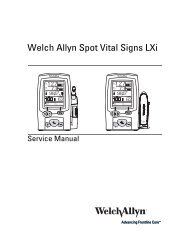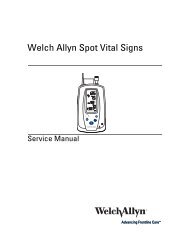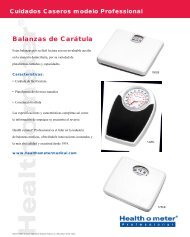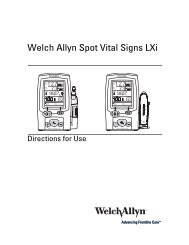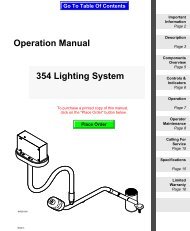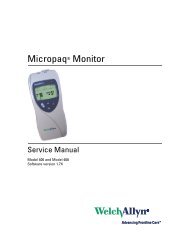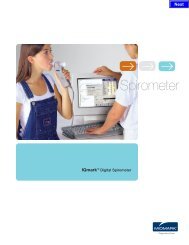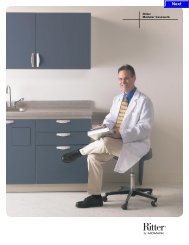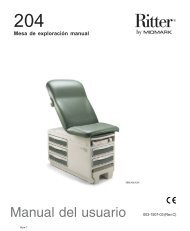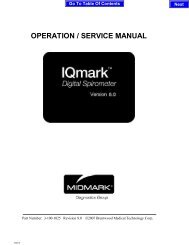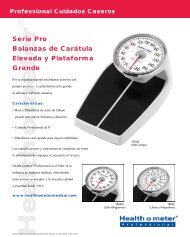Micropaq User Manual Model 406 and 408 - Medical Equipment Pros
Micropaq User Manual Model 406 and 408 - Medical Equipment Pros
Micropaq User Manual Model 406 and 408 - Medical Equipment Pros
You also want an ePaper? Increase the reach of your titles
YUMPU automatically turns print PDFs into web optimized ePapers that Google loves.
1<br />
Intended use<br />
General information<br />
The <strong>Micropaq</strong> ® monitor is intended to be used by clinicians for single or multiparameter<br />
vital signs monitoring of ambulatory <strong>and</strong> nonambulatory pediatric <strong>and</strong> adult patients in<br />
health care facilities. The monitor is able to withst<strong>and</strong> light rain exposure over short<br />
periods of time (uniform distribution of approximately 1 mm of water per minute for 10<br />
minutes or less).<br />
The <strong>Micropaq</strong> monitor is intended to operate with an Acuity ® Central Monitoring System<br />
through wireless communication over the Welch Allyn ® FlexNet ® network. FlexNet<br />
connects multiple devices to the Acuity Central Monitoring System through hardwired<br />
Ethernet networks <strong>and</strong> Wireless Local Area Networks (WLANs). If the <strong>Micropaq</strong> monitor<br />
is moved out of range or loses communication with the FlexNet network, it continues to<br />
monitor the patient, display patient data, <strong>and</strong> generate local patient alarms or alert<br />
messages.<br />
The ECG channel is intended primarily for five-lead ECG monitoring, although<br />
three-lead ECG monitoring is supported.<br />
The Pulse Oximetry channel is intended for continuous noninvasive monitoring of<br />
functional oxygen saturation of arterial hemoglobin (SpO2 ) <strong>and</strong> pulse rate<br />
(measured by an SpO2 sensor).<br />
The most likely locations for patients monitored by this device are step-down units,<br />
telemetry departments, general medical/surgical floors, emergency departments, <strong>and</strong> inhospital<br />
transport.<br />
This guide was written for clinicians. Although this guide may describe some monitoring<br />
techniques, Welch Allyn expects that the operator is a trained clinician who knows how to<br />
take <strong>and</strong> interpret a patient’s vital signs.<br />
Federal USA law restricts sale of the device identified in this manual to, or on the order of,<br />
a licensed medical practitioner.<br />
1



